A bridge too far
Neil Cullen, New Zealand Tree Grower February 2016.
In late 2012 we started to make preparations for constructing a crossing capable of carrying fully laden logging trucks over the main waterway, the Glenomaru Stream, which bisects our property. The crossing would connect to the country road an already constructed roadway of 2.5 km which provided access to about 80 hectares of mixed aged forest. Current access was provided by an old wooden bridge which shook vigorously when a mob of sheep passed over it. About 150 metres upstream there was a ford.
The first step was to get quotes for the two most likely options, a bridge and a drift deck culvert. The cost of a 14 metre long class one capable bridge was $67,000 plus GST and for installing a drift deck culvert with the same capability, $37,000. Even though there was a bit more roading involved for the culvert which would replace the old ford, it was a relatively comfortable choice to go with that cheaper option so we applied for resource consent from the Otago Regional Council. That is when the complications emerged.
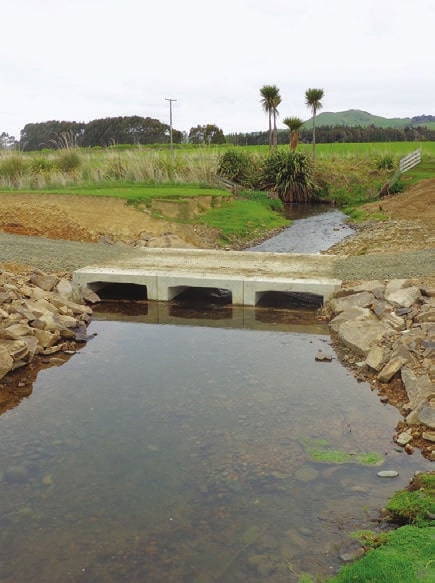
Not on our land
The council pointed out that the 20 metre strip of land between the stream and the county road actually belonged to our neighbour. Added to that, the road was not where it was surveyed to be, and a legal paper road followed the course of the stream. The local district council were concerned that if the culvert was installed on what was legally road reserve and was subsequently damaged by a flood, they might be considered liable.
There then followed several months of toing and froing between our lawyer, my neighbour and the council to see if a solution could be negotiated. A surveyor estimated resurveying and gazettal procedures for the roadway and possible purchase of the neighbour’s hectare of land would cost in the region of $14,000. Even though we were in no way responsible for the road being in the wrong place, because we were initiating the correction the council ruled we would have to pay for it. We subsequently explored less costly options for access and our neighbour generously agreed that we could just carry on as before, be assured of access to the road, and graze the hectare without any boundary adjustment. He was less keen on any legal easement written on to their title.
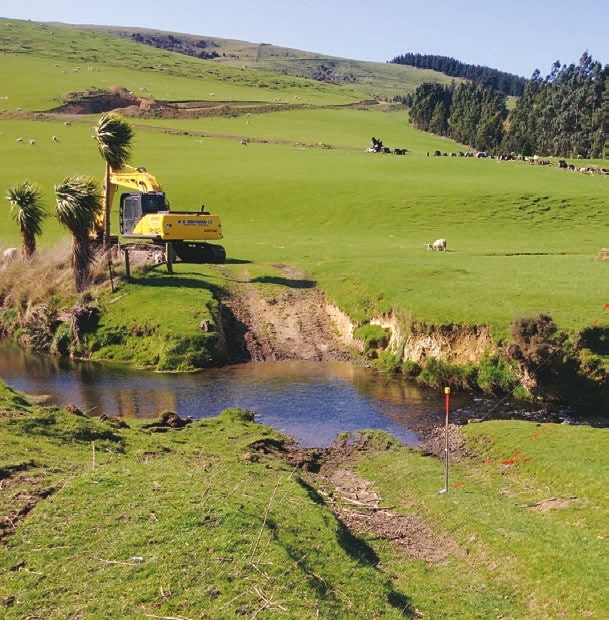
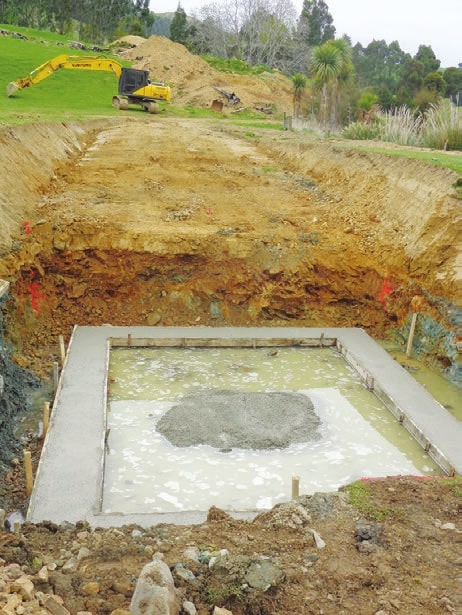
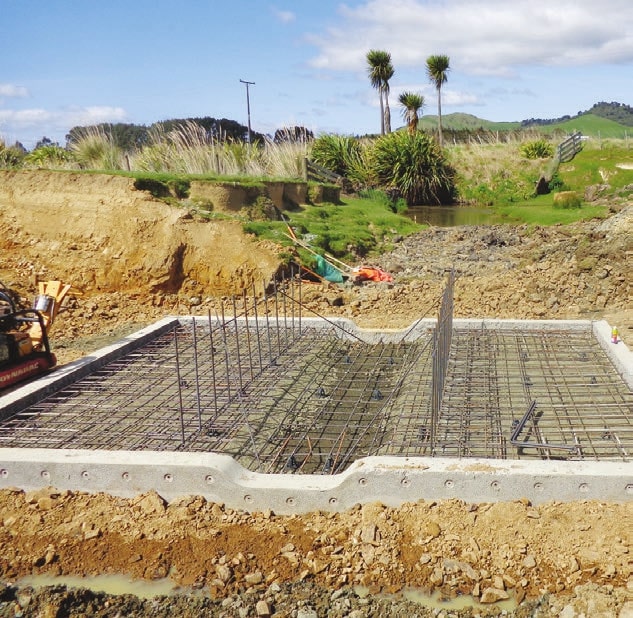
Simplified process
The other development which occurred at the same time in 2014 was the inaction of Otago Regional Council’s plan change to the regional Water Plan. Although the changes include quite severe restrictions on the release of sediment and nutrients into waterways, the erection of stream crossings under certain conditions was now a permitted activity. After consulting with our contractor we decided we could meet those conditions and so withdrew our application for resource consent.
The simplification of the regulatory process encouraged us to set aside concerns regarding access, paper roads and ownership and just do it. As more than two years had elapsed we asked the contractor for a new quote. This took several months to obtain as the engineer now decided that considerably more concrete work in the form of a metre deep precast scour beam was required. The resulting quote of $52,000, when added to the $8,400 we had already spent on buying the three box units, meant a total cost of over $60,000 and not much cheaper than a bridge. After a bit of teeth gnashing and head scratching we decided to accept the quote and get it done. Time was dragging on and the log prices were starting to creep up.
Weather
Construction began in October 2015 and the stream diversion and base concrete work went relatively smoothly. Care was taken to prevent any release of sediment by using a big straw bale acting as the filter trap. The final base concrete pour took place on Friday with the weekend for it to harden before placement of the box units on the Monday.
The weather had other plans with a largely not forecast 43 mm of rain falling on the Friday night with another 40 mm over the next couple of days. The stream went from a gentle clear brook to a brown torrent overnight.
It reverted to its original bed and the culvert base was covered with rock from the upstream diversion. Any thoughts of sediment prevention seemed a bit irrelevant. Ten days elapsed before the stream went down and the final construction could be completed. Fortunately there was no damage and a bit of shovelling soon uncovered the base. The three box sections were concreted into place on top of the base. The straw bale was retrieved from downstream and the approach roads and rock batters put in place.
The drift deck culvert is designed to carry the normal stream flow through the box sections and when there is a flood the excess will flow over the top with no damage to the culvert. A fish channel was provided with no drop-off on the bottom side enabling easy passage for any size of fish. The first time I walked over the completed culvert, a 100 mm long fish was observed making its way upstream through the channel. That seemed like a vote of approval. Let the logging begin.
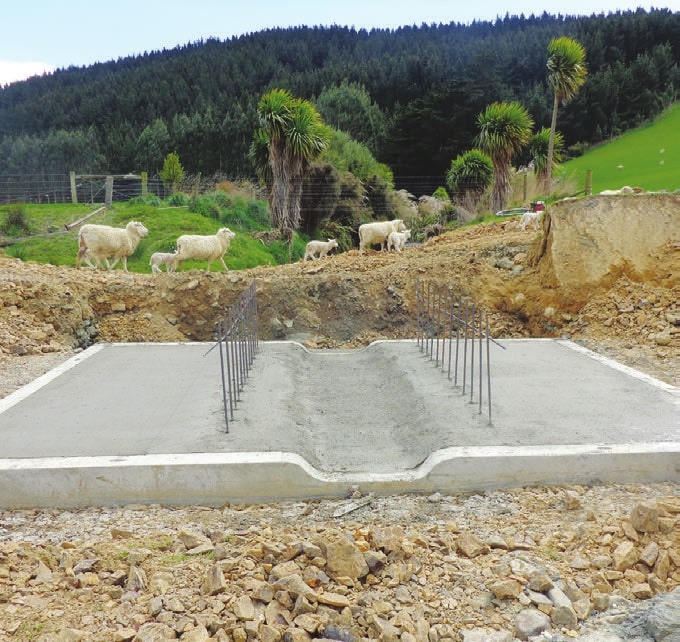
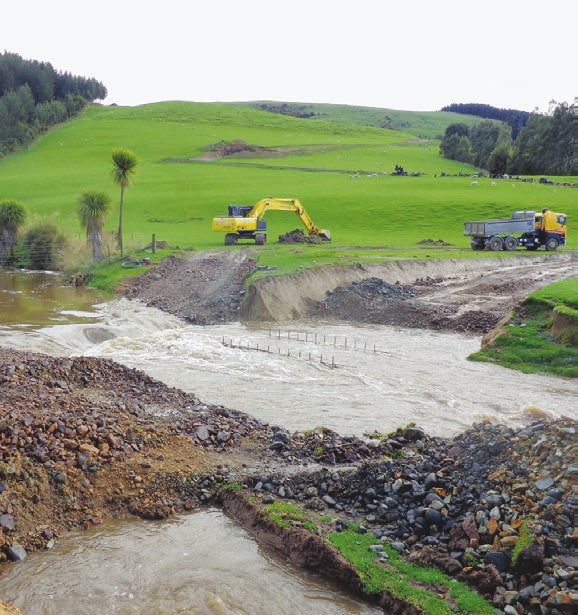
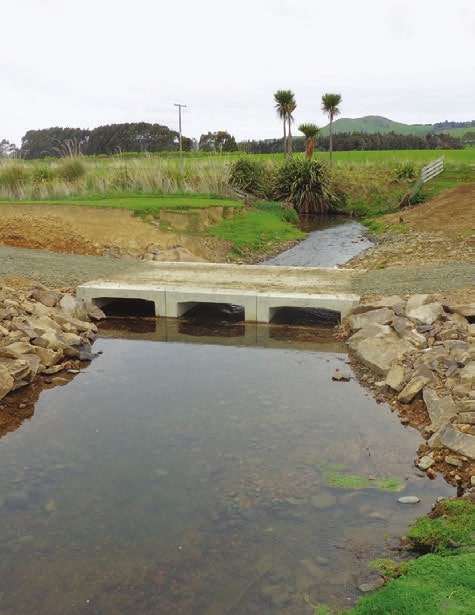

 Farm Forestry New Zealand
Farm Forestry New Zealand